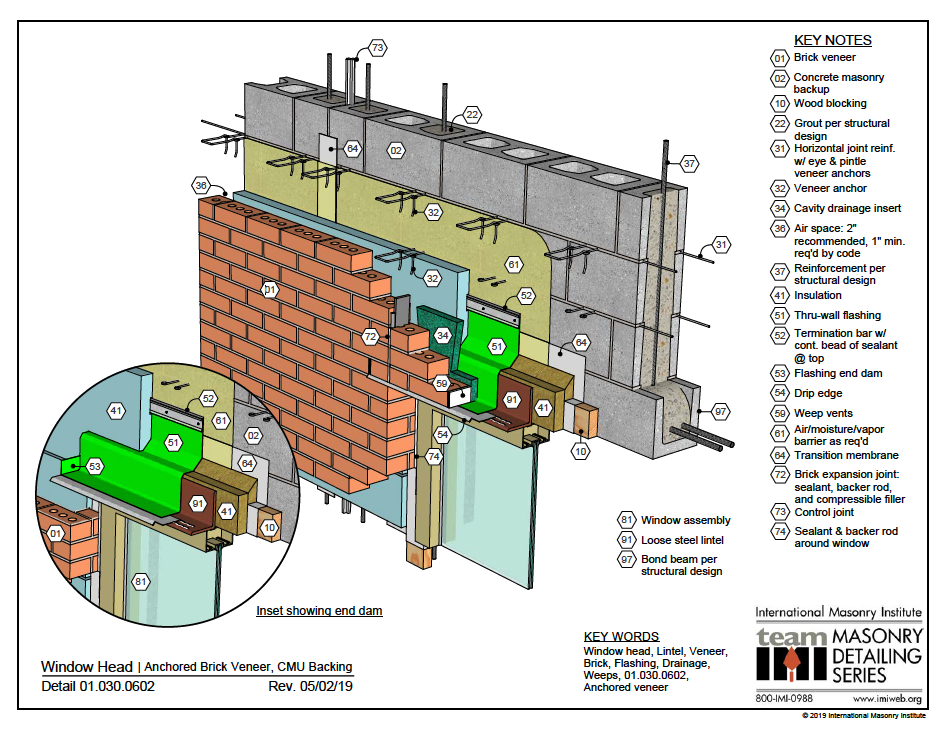Behind the Walls: The Importance of Thru-Wall Flashing
When it comes to protecting a building from water intrusion, what’s happening behind the walls is just as critical as the facade you see every day. This is especially true for drainage plane wall systems, where the integrity of the thru-wall flashing plays a pivotal role in maintaining a building’s weather-resistant barrier (WRB).
Why Thru-Wall Flashing Matters
Water intrusion is often the result of inadequate or missing thru-wall flashing systems. These flashing systems, a key component of the WRB, are designed to divert water away from critical areas like windows, doors, and other building openings. When these systems fail or are improperly installed, water can bypass the barrier, causing significant damage over time.
Digging Deeper: Addressing Water Intrusion
When water finds its way into a drainage plane wall, identifying and addressing the root cause often involves digging deeper—literally. Thru-wall flashing repairs require temporarily removing the cladding (facade materials such as brick, precast panels, or siding) to access and repair the WRB and flashing system. This process ensures that water is properly directed out of the building using essential components like:
- Rubber and metal flashings
- End dams to prevent water from entering at the flashing’s edges
- Weep tubes to channel water out
Without these elements, water can accumulate and penetrate into the building, leading to costly damage to conditioned spaces and structural materials.

This is a remedial thru-wall flashing assembly being installed, however, there are no end dams visible as it is a continuous shelf angle flashing.
Preventative Repairs: Protecting the Property
Proactive measures with thru-wall flashing repairs can save your property managers significant expenses in the long run. Properly installed and maintained thru-wall flashing ensures water is effectively managed and keeps their buildings’ interiors safe and dry.
For example, end dams, a critical part of the system, are often overlooked during initial construction. Without these, water can flow off the edges of the flashing and into the building instead of being directed away. Adding end dams during repairs prevents this issue and preserves the integrity of the wall system.
What Property Managers Need to Know
As a property service provider committed to excellence, understanding the importance of thru-wall flashing is critical to delivering exceptional care to your clients. By educating the property managers or building engineers you work with and digging deeper when addressing water intrusion to incorporating thorough repairs to the WRB system, you can provide them with long-term value and peace of mind.
Visualize It
To better understand how thru-wall flashing integrates into the overall drainage plane system, we’ve included a detailed visual example below. This graphic, created by IMI, demonstrates the layers of protection behind the cladding and highlights key elements such as flashings and end dams.

This masonry window head detail illustrates continuous air, moisture, and vapor resistance with integrated transition materials, insulation for thermal control, cavity drainage protection, and thru-wall flashing with end dams and drip edges for moisture management. While the backup wall shown is a concrete masonry unit (CMU), it could also be constructed with materials like metal studs and sheathing. Firestop material may be added per code.
Thru-wall flashing may not be visible from the outside, but its impact is unmistakable. For property service providers, addressing these hidden systems ensures you can provide long-lasting solutions for the properties you serve. By educating your team and clients on the importance of thru-wall flashing, you’ll help maintain the integrity and value of their buildings for years to come.
Let’s keep the water where it belongs—outside the building.